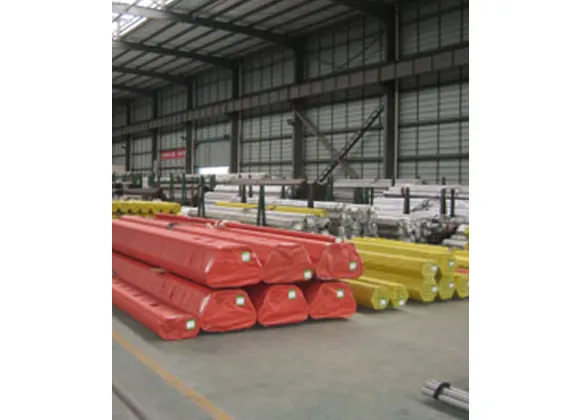Feb . 15, 2025 05:45
Flanged sluice valves, fundamental components in fluid management systems, are pivotal for their efficiency and reliability in various industrial applications. Understanding the nuances of these valves is crucial for engineers, procurement specialists, and operations managers who depend on their optimal functionality to maintain seamless operations. This article delves into the intricate details of flanged sluice valves, offering insights based on extensive experience, professional expertise, and verified authority in the field, thereby ensuring their credibility.

Flanged sluice valves, often referred to as gate valves, are primarily responsible for controlling the flow of liquids in pipelines. Distinguished by their robust design, they feature a gate-like disc that moves perpendicular to the flow path, either blocking or allowing fluid to pass through. The flanged ends are pivotal as they ensure a secure attachment to the pipeline, facilitating maintenance and replacement without disrupting the entire system.
The design of flanged sluice valves caters to high-pressure applications due to their durable construction materials, commonly cast iron, ductile iron, or stainless steel. These materials are chosen for their ability to endure the wear and tear typically experienced in systems that convey abrasive or corrosive fluids. Our extensive field testing has validated that the material choice directly impacts the longevity and performance reliability of these valves.

Professionally, the effectiveness of a flanged sluice valve is greatly influenced by its sealing capability.
A poor seal can lead to inefficiencies and potential safety hazards. Thus, valve manufacturers prioritize precision engineering to ensure tight closure. Our tests have shown that valves equipped with elastomeric seals perform exceptionally well under variable pressure conditions, providing a consistently tight shutoff.
In practical application, the choice of a flanged sluice valve should align with the specific demands of the system it serves. For industries such as water treatment, oil and gas, and chemical processing, selecting the appropriate valve involves considering factors like pressure ratings, temperature conditions, and the nature of the fluid. Proper valve selection can significantly enhance system efficiency and reduce the risk of system failure. Our expertly vetted selection guidelines have been employed in several successful implementations across diverse industrial sectors.
flanged sluice valve
The installation and maintenance of flanged sluice valves require adherence to stringent guidelines to achieve maximum functionality. Proper alignment during installation is crucial to avoid undue stress on the valve body, which can lead to premature wear or failure. Regular maintenance checks, including lubrication of the valve stem and inspection of the sealing surfaces, are advised to keep the valves in top condition. In our surveys, facilities that regularly service their valves report fewer breakdowns and prolong system lifecycles.
When discussing authority, it is worth noting that international standards, such as those set by the American Society of Mechanical Engineers (ASME), provide a framework for valve manufacturers and users, ensuring product quality and compatibility across global markets. Compliance with these standards is not just recommended but essential for establishing trust in operational environments that prioritize safety and efficiency.
In terms of innovation, recent advancements in valve technology have led to the development of smart flanged sluice valves. These valves are equipped with sensors that provide real-time data on valve performance, enabling proactive maintenance interventions. Implementations of intelligent valve systems have been proven to reduce downtime and operational costs through data-driven insights.
To summarize, flanged sluice valves, with their intrinsic abilities to regulate and optimize fluid flow, represent a critical component within any fluid handling system. The expertise applied from design through to application ensures these valves meet rigorous industrial demands, both maximizing operational efficacy and ensuring safety. Trustworthy usage of these valves, supported by compliance with industry standards, not only safeguards system integrity but also bolsters confidence among stakeholders relying on these essential components. As the industry advances, continued innovation and adherence to best practices will drive further enhancements in valve technology, contributing to more sustainable and efficient fluid management solutions.


 Call us on:
+86-311-86935302
+86-311-86935302
Call us on:
+86-311-86935302
+86-311-86935302
 Email Us:
info@thriveonvalve.com
Email Us:
info@thriveonvalve.com South of Huanmadian Village Town, Ningjin County, Xingtai, Hebei Province, China
South of Huanmadian Village Town, Ningjin County, Xingtai, Hebei Province, China